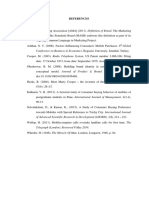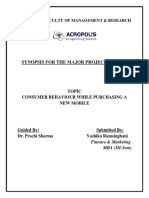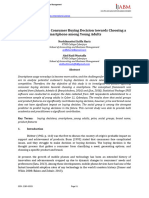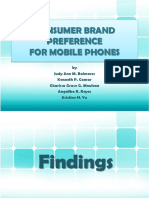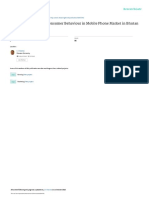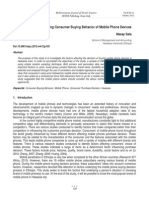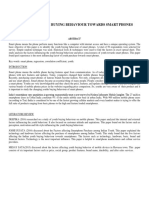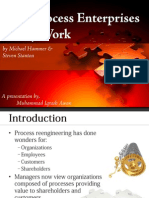0% found this document useful (0 votes)
132 views4 pagesVariables That Affect Mobile Phone Consumption
This document summarizes research from 4 articles on variables that affect mobile phone consumption and buying behavior. Key variables identified include technical features of phones like quality, size, price and services. Social factors are also important, such as influence of reference groups like friends and family. Psychological factors influence addiction, like anxiety, preoccupation and need. Consumer decision making draws on heuristics like conjunctive or disjunctive rules. Gender, age, self-image and social status also impact mobile phone preferences and purchase decisions.
Uploaded by
Muhammad Iqrash AwanCopyright
© Attribution Non-Commercial (BY-NC)
We take content rights seriously. If you suspect this is your content, claim it here.
Available Formats
Download as DOCX, PDF, TXT or read online on Scribd
0% found this document useful (0 votes)
132 views4 pagesVariables That Affect Mobile Phone Consumption
This document summarizes research from 4 articles on variables that affect mobile phone consumption and buying behavior. Key variables identified include technical features of phones like quality, size, price and services. Social factors are also important, such as influence of reference groups like friends and family. Psychological factors influence addiction, like anxiety, preoccupation and need. Consumer decision making draws on heuristics like conjunctive or disjunctive rules. Gender, age, self-image and social status also impact mobile phone preferences and purchase decisions.
Uploaded by
Muhammad Iqrash AwanCopyright
© Attribution Non-Commercial (BY-NC)
We take content rights seriously. If you suspect this is your content, claim it here.
Available Formats
Download as DOCX, PDF, TXT or read online on Scribd
/ 4










